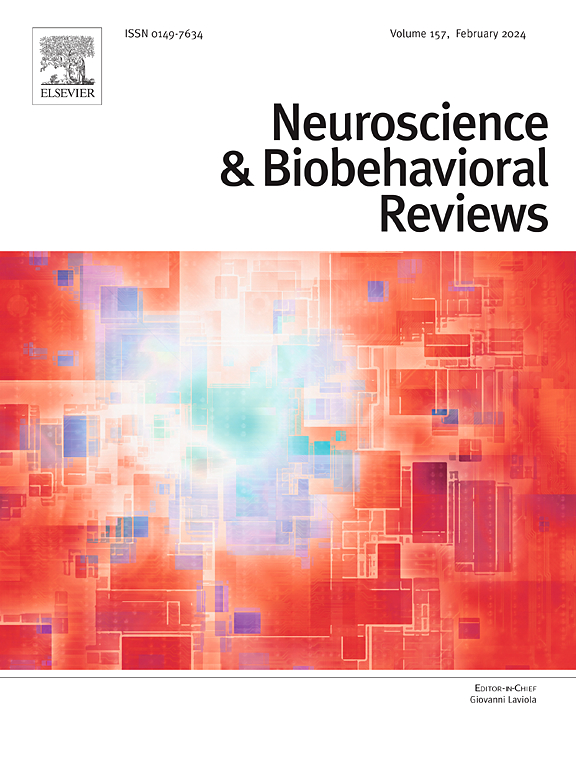前额叶皮层在听觉语言幻觉中的作用:行动者还是被动旁观者?
IF 7.9
1区 医学
Q1 BEHAVIORAL SCIENCES
引用次数: 0
摘要
在本文中,我们讨论了前额叶皮层(PFC)在精神分裂症,特别是听觉言语幻觉(AVH)中的作用。本文首先回顾了20世纪70年代的欠正面性概念,并将PFC视为无法调节或控制内部产生的感觉冲动的被动旁观者。我们进一步讨论了PFC与记忆过程之间的关系,以及AVH经历的发生是由于负面情绪记忆的侵入和声音情绪内容的调节。同样,AVH体验可能是现实监测失败的结果,由于内部产生的想法和外部影响之间的异常区分,也依赖于PFC功能。我们随后介绍了一种新的观点,即PFC作为行动者或主动代理的作用,这是一种在网络连接研究中看到的超正面性。我们认为,在avh体验的产生过程中,脑和行为之间的复杂关系可能被过度简化了。相反,当环境条件发生变化时,调节网络内部动态的能力受损可能起着核心作用。因此,我们讨论了任务阳性和任务负性皮层网络如何在诊断水平上随时间动态地向上和向下调节,以及这如何影响症状水平上AVH体验的存在或不存在。我们的结论是,这是大规模网络之间动态相互作用的失败,这对于理解精神分裂症,特别是听觉语言幻觉至关重要。本文章由计算机程序翻译,如有差异,请以英文原文为准。
Role of prefrontal cortex in auditory-verbal hallucinations: Actor or passive bystander?
In this paper we discuss the role of the prefrontal cortex (PFC) in schizophrenia and particularly in auditory verbal hallucinations (AVH). The paper starts with a review of the concept of hypofrontality in the 1970s and a view of PFC as a passive bystander unable to regulate or control internally generated sensory impulses. We further discuss the relationship between PFC and memory processes and the hypothesis that AVH experiences occur because of intrusions of negative emotional memories, and regulation of the emotional content of the voices. Similarly, AVH experiences can be the result of failure of reality monitoring, due to aberrant discrimination between internally generated thoughts and external influences, also dependent on PFC functioning. We subsequently introduce a new view of the role of the PFC as an actor, or active agent, a kind of hyperfrontality seen in network connectivity studies. We suggest that both hypo- and hyperfrontality models may be an oversimplification of the complex relationship between brain and behavior in the generation of AVH-experiences. Rather, the impaired ability to regulate inter-network dynamics when environmental conditions change may play a central role. We therefore discuss how task-positive and task-negative cortical networks are dynamically up- and down-regulated across time at the diagnostic level, and how this affects the presence or absence of an AVH experience at the symptom level. We conclude by suggesting that it is this failure of dynamic interplay between large-scale networks that is critical for an understanding of schizophrenia in general and auditory verbal hallucinations in particular.
求助全文
通过发布文献求助,成功后即可免费获取论文全文。
去求助
来源期刊
CiteScore
14.20
自引率
3.70%
发文量
466
审稿时长
6 months
期刊介绍:
The official journal of the International Behavioral Neuroscience Society publishes original and significant review articles that explore the intersection between neuroscience and the study of psychological processes and behavior. The journal also welcomes articles that primarily focus on psychological processes and behavior, as long as they have relevance to one or more areas of neuroscience.

 求助内容:
求助内容: 应助结果提醒方式:
应助结果提醒方式:


